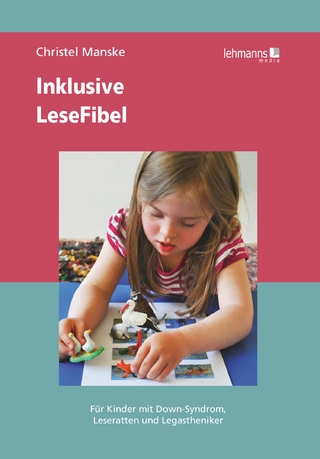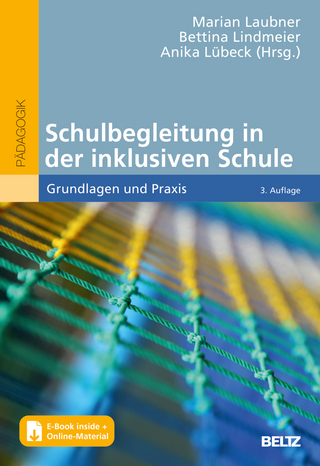
Visible Learning for Literacy, Grades K-12
Corwin Press Inc (Verlag)
978-1-5063-3235-2 (ISBN)
"Every student deserves a great teacher, not by chance, but by design" — Douglas Fisher, Nancy Frey, & John Hattie
What if someone slipped you a piece of paper listing the literacy practices that ensure students demonstrate more than a year’s worth of learning for a year spent in school? Would you keep the paper or throw it away?
We think you’d keep it. And that’s precisely why acclaimed educators Douglas Fisher, Nancy Frey, and John Hattie wrote Visible Learning for Literacy. They know teachers will want to apply Hattie’s head-turning synthesis of more than 15 years of research involving millions of students, which he used to identify the instructional routines that have the biggest impact on student learning.
These practices are "visible" for teachers and students to see, because their purpose has been made clear, they are implemented at the right moment in a student’s learning, and their effect is tangible. Yes, the "aha" moments made visible by design.
With their trademark clarity and command of the research, and dozens of classroom scenarios to make it all replicable, these authors apply Hattie’s research, and show you:
How to use the right approach at the right time, so that you can more intentionally design classroom experiences that hit the surface, deep, and transfer phases of learning, and more expertly see when a student is ready to dive from surface to deep.
Which routines are most effective at specific phases of learning, including word sorts, concept mapping, close reading, annotating, discussion, formative assessment, feedback, collaborative learning, reciprocal teaching, and many more.
Why the 8 mind frames for teachers apply so well to curriculum planning and can inspire you to be a change agent in students’ lives—and part of a faculty that embraces the idea that visible teaching is a continual evaluation of one’s impact on student’s learning.
"Teachers, it’s time we embrace the evidence, update our classrooms, and impact student learning in wildly positive ways," say Doug, Nancy, and John. So let’s see Visible Learning for Literacy for what it is: the book that renews our teaching and reminds us of our influence, just in time.
Douglas Fisher is professor and chair of educational leadership at San Diego State University and a leader at Health Sciences High and Middle College. Previously, Doug was an early intervention teacher and elementary school educator. He is a credentialed teacher and leader in California. In 2022, he was inducted into the Reading Hall of Fame by the Literacy Research Association. He has published widely on literacy, quality instruction, and assessment, as well as books such as Welcome to Teaching, PLC+, Teaching Students to Drive their Learning, and Student Assessment: Better Evidence, Better Decisions, Better Learning. Nancy Frey is professor of educational leadership at San Diego State University and a leader at Health Sciences High and Middle College. Previously, Nancy was a teacher, academic coach, and central office resource coordinator in Florida. She is a credentialed special educator, reading specialist, and administrator in California. She is a member of the International Literacy Association’s Literacy Research Panel. She has published widely on literacy, quality instruction, and assessment, as well as books such as The Artificial Intelligences Playbook, How Scaffolding Works, How Teams Work, and The Vocabulary Playbook. John Hattie, PhD, is an award-winning education researcher and best-selling author with nearly thirty years of experience examining what works best in student learning and achievement. His research, better known as Visible Learning, is a culmination of nearly thirty years synthesizing more than 2,100 meta-analyses comprising more than one hundred thousand studies involving over 300 million students around the world. He has presented and keynoted in over three hundred international conferences and has received numerous recognitions for his contributions to education. His notable publications include Visible Learning, Visible Learning for Teachers, Visible Learning and the Science of How We Learn; Visible Learning for Mathematics, Grades K-12; and 10 Mindframes for Visible Learning.
List of Videos
Preface
Acknowledgments
Chapter 1. Laying the Groundwork for Visible Learning for Literacy
The Evidence Base
Meta-Analyses
Effect Sizes
Noticing What Works
Learning From What Works, Not Limited to Literacy
Teacher Credibility
Teacher–Student Relationships
Teacher Expectations
General Literacy Learning Practices
1. Challenge
2. Self-Efficacy
3. Learning Intentions With Success Criteria
Conclusion
Chapter 2. Surface Literacy Learning
Why Surface Literacy Learning Is Essential
Acquisition and Consolidation
Acquisition of Literacy Learning Made Visible
Leveraging Prior Knowledge
Phonics Instruction and Direct Instruction in Context
Vocabulary Instruction
Mnemonics
Word Cards
Modeling Word Solving
Word and Concept Sorts
Wide Reading
Reading Comprehension Instruction in Context
Summarizing
Annotating Text
Note-Taking
Consolidation of Literacy Learning Made Visible
Rehearsal and Memorization Through Spaced Practice
Repeated Reading
Receiving Feedback
Collaborative Learning With Peers
Conclusion
Chapter 3. Deep Literacy Learning
Moving From Surface to Deep
Deep Acquisition and Deep Consolidation
Deep Acquisition of Literacy Learning Made Visible
Concept Mapping
Discussion and Questioning
Close Reading
Deep Consolidation of Literacy Learning Made Visible
Metacognitive Strategies
Reciprocal Teaching
Feedback to the Learner
Conclusion
Chapter 4. Teaching Literacy for Transfer
Moving From Deep Learning to Transfer
Types of Transfer: Near and Far
The Paths for Transfer: Low-Road Hugging and High-Road Bridging
Setting the Conditions for Transfer of Learning
Teaching Students to Organize Conceptual Knowledge
Students Identify Analogies
Peer Tutoring
Reading Across Documents
Problem-Solving Teaching
Teaching Students to Transform Conceptual Knowledge
Socratic Seminar
Extended Writing
Time to Investigate and Produce
Conclusion
Chapter 5. Determining Impact, Responding When the Impact Is Insufficient, and Knowing What Does Not Work
Determining Impact
Preassessment
Postassessment
Responding When There Is Insufficient Impact
Response to Intervention
Screening
Quality Core Instruction
Progress Monitoring
Supplemental and Intensive Interventions
Learning From What Doesn’t Work
Grade-Level Retention
Ability Grouping
Matching Learning Styles With Instruction
Test Prep
Homework
Conclusion
Appendix: Effect Sizes
References
Index
| Erscheinungsdatum | 27.04.2016 |
|---|---|
| Reihe/Serie | Corwin Literacy |
| Verlagsort | Thousand Oaks |
| Sprache | englisch |
| Maße | 187 x 231 mm |
| Gewicht | 430 g |
| Themenwelt | Sozialwissenschaften ► Pädagogik ► Schulpädagogik / Grundschule |
| ISBN-10 | 1-5063-3235-8 / 1506332358 |
| ISBN-13 | 978-1-5063-3235-2 / 9781506332352 |
| Zustand | Neuware |
| Haben Sie eine Frage zum Produkt? |
aus dem Bereich


